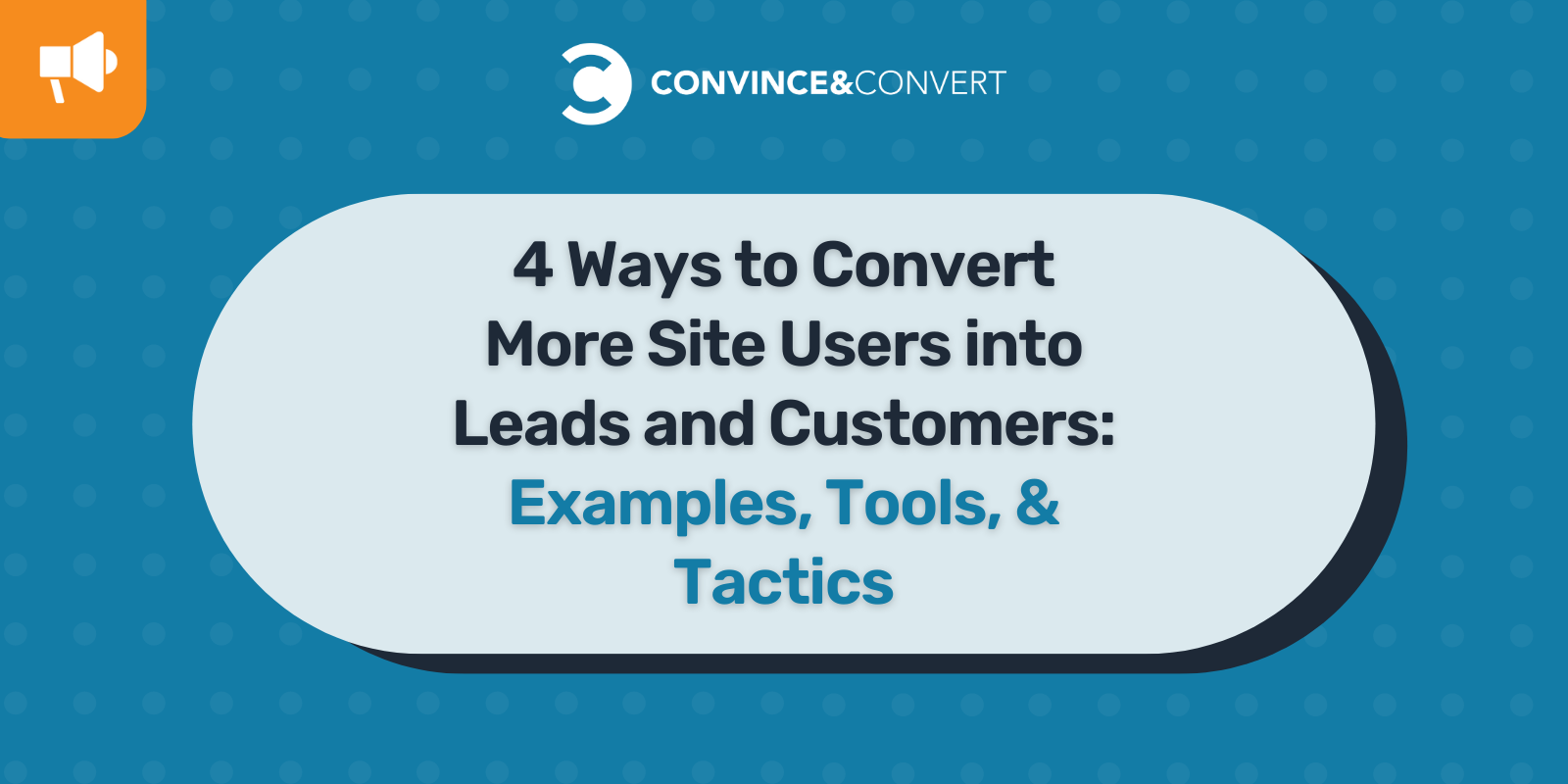
Would you like more of your site users to convert into buyers or customers?
New reports reveal that it is getting more and more difficult as buyers’ journeys are getting more and more complicated:
- Due to the worsening economy, more consumers (over 75%) research online for reviews and better prices before buying anything
- In ecommerce, the average conversion rate is only 1.62%
- In B2B, the decision making unit is bigger than ever: there are now 6-10 people involved in a B2B purchasing decision which obviously slows down and complicates the decision-making process. (Source: Gartner)
And let’s not forget an anecdotal car buying journey that turned into 900+ digital interactions that included Google searches, video and image viewing, price comparisons, getting in touch with sales reps, and more.
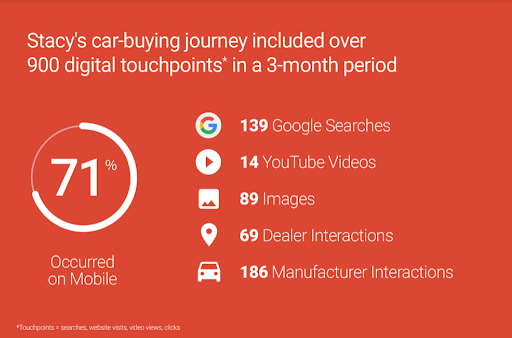
Buying journeys are no longer linear. In fact, they are more like “journeys” these days with lots of “touchpoints” (i.e. site visits, form fills, social media interactions) as well as random distractions and interruptions.
If you were to visualize a buyer’s journey, here’s a great illustration from Gartner:
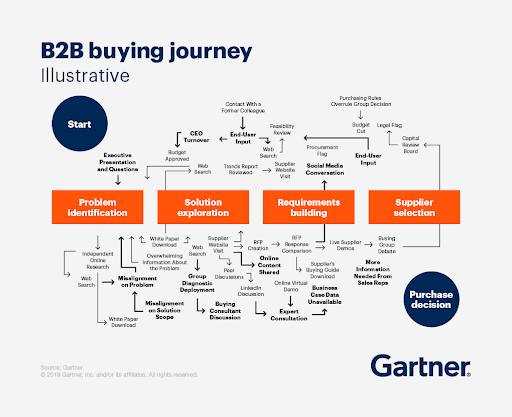
While the discovery phase (when your target customers are still researching their options) may often be out of your control (Google is much more than rankings now and you cannot control all of those sections that impact buying decisions), is there a way to shorten your site visitors’ buying journeys once they land on one of your pages?
It’s a huge task and consists of many pieces — none of which is a magic bullet. Here’s an overview of some of the more effective tactics to get more of your site users to complete their journey on your site instead of leaving to continue it elsewhere.
1. First Things First: Load Time and User Experience
In today’s fast-paced web environment, users feel like moving on almost the second they land on a particular page.
So keeping your site users interacting with your site and preventing them from leaving is by far the most important step here.
And one of the biggest elements here is to ensure your page loads fast. As the web grows, so do customers’ expectations regarding their web experience.
According to Google, improving your load time by 0.1s can boost conversion rates by 8%.
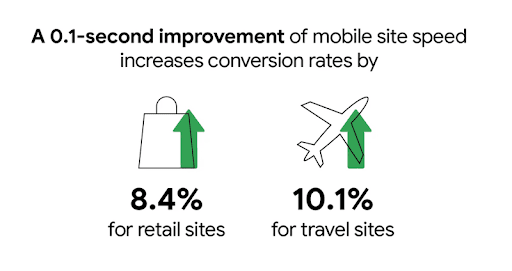
This is huge.
Keep an eye on your page load time, especially when it comes to important pages that are supposed to turn site visitors into customers, like product pages and the checkout page. Google Page Insights offer a detailed report on whether your page complies with modern usability standards:
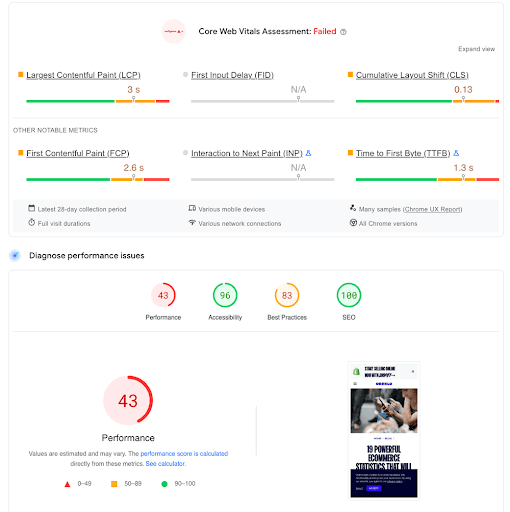
Based on your content management platform, there are various ways to improve your page load time and user experience, including:
- Search for plugins and apps that handle speed optimization for you
- Optimize your images
- Use Google Search Console to be alerted when Google finds issues with your site’s mobile usability issues
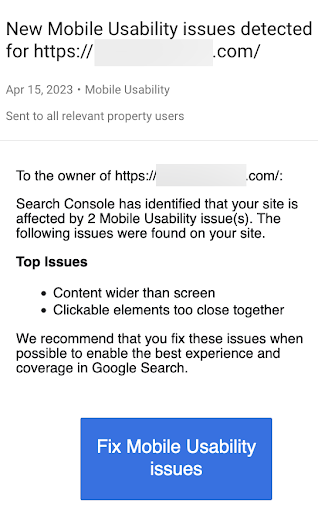
2. Shorten your buying journeys
This one may seem obvious, but many of those barriers still exist.
In fact, many of those barriers exist for valid marketing reasons. For example, a company may require customers to “request a demo” before they are even able to buy a product. And there may be a valid reason there: They want to match the right product with the right customer.
Another example is that lots of companies require a customer to create an account in order to complete a purchase. This is usually done for the purpose of collecting customer data and personalizing experiences going forward.
Now that most companies in just about any niche are dealing with increased competition, none of us can rely on tactics that seem to have been working for years.
There’s always room for testing new ways to do sales and marketing. Here are a few ideas on how you can shorten the buyer journey by removing barriers:
- Consider limiting options. Sometimes too much choice overcomplicates buying journeys forcing them to think, research, and ultimately postpone making a decision. If there’s a way to eliminate your plans or product suggestions, consider testing it out.
- Test an immediate “Buy now” button. Instead of forcing your customers to “Add to cart” and then go from page to page to make a purchase, create a “Buy now” button that offers a distraction-free purchase. WooCommerce offers a “Buy now” button that replaces “Add to cart” and allows customers to instantly buy a selected product without even leaving the product page.
- For service providers, consider allowing your potential customers to schedule an appointment right away bypassing the email back-and-forth. Tools like Goldie can help you set up these kinds of buying journeys. The tool will process prepayments and manage reminders.
- Scale and automate your customer support options. These include AI-driven assistants (like chatbots) and IVR for phone support.
3. Get Them to Act by Using Personalized Marketing
Marketing personalization has long proved to be an effective way to keep web users on a specific site, as well as improve conversions. Yet, not many brands are taking full advantage of the tactic.
The truth is, AI-powered personalization doesn’t have to be too complicated or expensive. There are a few powerful solutions delivering AI-driven technologies.
Dialogue is an e-commerce personalization platform that offers a variety of tools and features that prompt shoppers to make purchasing decisions based on their intent and desire and convert them into buyers.
Instead of recommending similar (or even matching) products, the platform delivers recommendations based on each unique customer’s journey, making the products almost irresistible.
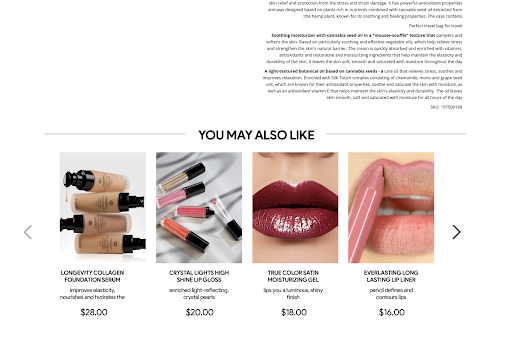
4. Curate & Publicize Social Proof
Don’t underestimate the power of social proof (reviews and testimonials). For nearly 9 in 10 consumers, an online review is as important as a personal recommendation.
95 percent of shoppers read online reviews before visiting a business.
Put simply, unless you display social proof on your site, 90% of your site users may leave (or interrupt their journeys across your site) to find it elsewhere.
It is a good idea to experiment with different types and formats of social proof. It can be in the form of tweeted testimonials, video reviews, or curated Instagram demonstrations:
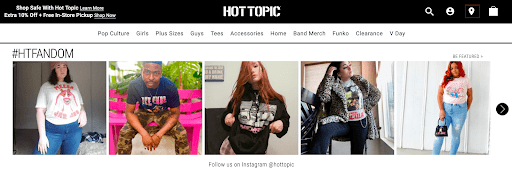
”How did they wear it?” Instagram updates can be powerful on-site social proof.
Here’s a huge list of all possible ways to design and place your social proof on your site.
Test and Then Test Some More!
Like with just about any digital marketing strategy, don’t implement any of these tactics without A/B testing them first.
Finteza offers an easy way to A/B test anything on your site without the need to invest in expensive software.
Additionally, here’s a handy checklist on how to A/B test and how to make the most of it.
Conclusion
There may be many more ways to shorten your customers’ buying journeys and increase conversions. Yet, these four tips are probably the most powerful ones, and they work in just about any niche. The good news is, all of the methods above will also make your site users’ lives easier, so you are likely to see more returning customers too! Good luck!

